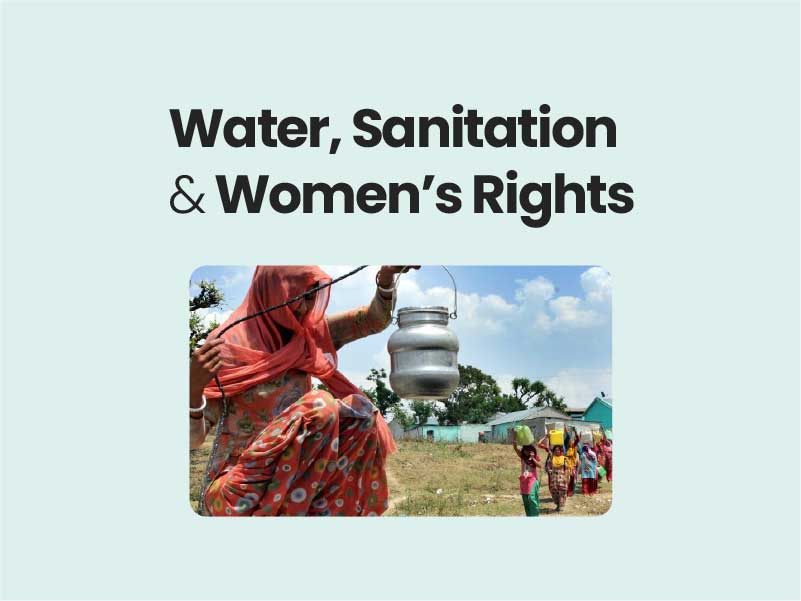Companion@360 → 7 Month programme to sharpen your writing skills → REGISTER NOW

Water, Sanitation And Women’s Rights
The right to water and sanitation is recognized as fundamental to attaining all other human rights. Globally, however, 2.1 billion people do not have access to safe drinking water at home, 2.3 billion do not have basic sanitation and 1 billion practice open defecation. Women and girls are disproportionately affected by the lack of access to basic water, sanitation and hygiene facilities, due to their needs during periods of increased vulnerability to infection around menstruation and reproduction
Interconnection: Water, Sanitation & Hygiene With Women’s Rights:
-
- Women and girls also have a larger role relative to men in water, sanitation and hygiene activities, including in agriculture and domestic labour. This situation has implications for gender equality and empowerment.
- The sustainable development goals (SDGs) make an important initial step in connecting water, sanitation and hygiene (SDG 6) and gender equality and empowerment (SDG 5) through target 6.2, which emphasizes access to equitable sanitation and hygiene, and the needs of women and girls. However, indicators to measure the specific needs of women and girls are still emerging.
- Inequalities in access to water, sanitation and hygiene services have been measured between rural and urban areas and across country wealth quintiles, as well as by sex.
- However, measurement of the burden placed on women and girls, the opportunity costs of these burdens, and female empowerment related to water, sanitation and hygiene decision-making and autonomy are limited.
- Based on a process of expert input and literature review, here we offer a compilation of current water, sanitation and hygiene indicators that measure gender equality and empowerment in four interrelated priority areas.
- Within each priority area, we describe and critique the status of these measures and identify where further research is needed to better measure gendered aspects of water, sanitation and hygiene at programme, national and global levels.
- The first priority area is that of women’s water-fetching responsibility and time-use burden, and the implications for health and economic well-being.
Currently, as part of SDG monitoring, indicators are collected on access to water on premises (SDG 6) and proportion of time spent on unpaid domestic and care work by sex and age (SDG 5)
- The second area is sanitation access and its relationship with gender-based violence and psychosocial stress.
- The third area is women’s water, sanitation and hygiene needs during menstruation, pregnancy and caregiving, and effects on health, education and psychosocial stress.
Read Also National Nutrition Mission
Challenges:
- The lack of basic water, sanitation and hygiene services in households and extra-household settings, such as schools and health-care facilities, has implications for girls’ menstrual hygiene management, safety and emotional and physical well-being.
- The presence of these services in health-care facilities is critical to reducing the risk of infections among patients and providers, especially during childbirth.
- Women’s participation in water, sanitation and hygiene decision-making and governance, leading to their social and political empowerment.
Conclusion:
- Women are largely responsible for household water, sanitation and hygiene management; they bear a disproportionate burden when these basic services are lacking, and face health, security and psychological vulnerabilities due to inadequate access and decision-making control.
- To emphasize the need for measurement at the intersection of gender equality and water, sanitation and hygiene to guide SDG monitoring and achievement.
